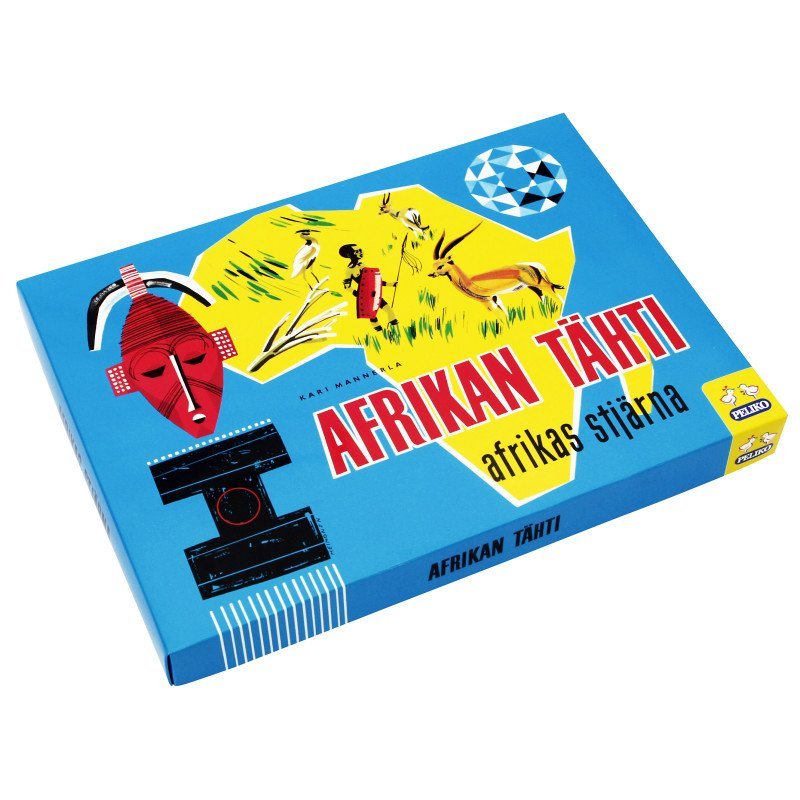Afrikan tähti (1951)
Afrikan tähti
“Afrikan tähti,” also known as “Den försvunna diamanten” in Swedish and “Afrikas stjärna” in Norwegian, is a Finnish board game designed by Kari Mannerla in 1949 when he was 19 years old. It has remained one of the most sold board games in Finland for 65 years and has been translated into over 16 languages. The game is most popular in the Nordic countries, where it was widely marketed in Sweden, Norway, and Denmark in 1960.
Why is Afrikan tähti Popular?
Afrikan tähti is a race between several players, with a minimum of two players and a maximum of theoretically unlimited players. The board covers the continent of Africa, with famous cities marked as big red circles and routes consisting of small black circles connecting them. Players can start from either Cairo, Egypt, or from Tangiers, Morocco. The game has been made into a video game for the Commodore 64.
Game Components of Afrikan tähti
How To Setup Afrikan tähti
To set up the game, players start by placing the board in the middle of the playing area. Each player chooses a starting point, either Cairo, Egypt, or Tangiers, Morocco. The tokens are shuffled and randomly placed on the board. Players receive their starting money and a dice. The game is ready to begin once all components are in place.
Gameplay Mechanics and Game Objective
Player Experience
Playing Afrikan tähti is an adventurous journey across Africa, filled with surprises and challenges. The game is simple enough for anyone to understand, even those who don’t speak Finnish, making it accessible to a wide audience. However, it has been criticized for its high reliance on luck rather than skill, which can make the game less engaging for some players.
Pros
Cons
Personal Thoughts on Afrikan tähti
Afrikan tähti is a game that appeals to those who enjoy a mix of luck and adventure. While it is a classic and has a nostalgic appeal, it is important to acknowledge the criticisms regarding its colonial and racist undertones. The game is best suited for families and casual gamers who value its historical significance and are willing to overlook its shortcomings. However, for players seeking games that require strategy and skill, Afrikan tähti might not be the best fit. Despite the controversy, the game remains a cultural icon in Finland and the Nordic countries, serving as a reminder of the need for sensitivity and inclusivity in game design.
We are supported by our audience. When you purchase through links on our site, we may earn an affiliate commission, at no extra cost for you. Learn more.

